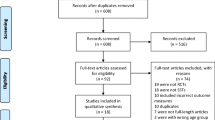Abstract
Recent work in both experimental and clinical psychology indicates an important link exists between the development of motor control and language development. Diagnostic and therapeutic work with autistic children reveals a high incidence of gross motor dysfunction along with language deficits. A study to evaluate the effectiveness of behavior modification techniques in eliciting speech from nursery-age autistic children yielded new data to confirm the importance of the relationship. Results from a case study of one autistic child demonstrated that the child most frequently vocalized when motorically quiet, and engaged in motor activity when not speaking and especially prior to speech. Data from 30 half-hour behavior modification sessions and an intensive clinical interview indicated that limiting the child's gross motor activity was effective in increasing the frequency of vocalization. Several theoretical interpretations of this phenomenon as well as implications for treatment and further research are offered.
Similar content being viewed by others
References
Allport, G. (Ed.).William James' psychology: The brief course. New York: Harper & Row, 1961.
Bayley, N. Comparisons of mental and motor test scores for ages 1–15 months by sex, birth order, race, geographical location, and education of parents.Child Development, 1965,36, 370–411.
Bender, L. Childhood schizophrenia.Nervous Child, 1942,1, 138–140.
Bender, L. Childhood schizophrenia.American Journal of Orthopsychiatry, 1947,17, 40–56.
Bogen, J. E. The other side of the brain II: An appositional mind.Bulletin of the Los Angeles Neurological Society, 1969,34, 135–162.
Bogen, J. E. Some educational aspects of hemispheric specialization.U.C.L.A. Educator, 1975,17, 24–32.
Cattell, P.The measurement of intelligence of infants and young children. New York: Psychological Corporation, 1940.
DeMyer, M. K. Motor, perceptual-motor and intellectual disabilities of autistic children. In L. Wing (Ed.),Early childhood autism. Oxford: Pergamon Press, 1976.
Fish, B., & Hagin, R. Visual-motor disorders in infants at high risk for schizophrenia.Archives of General Psychiatry, 1973,28, 900–904.
Freedman, A., & Bender, L. When the childhood schizophrenic grows up.American Journal of Orthopsychiatry, 1957,27, 245–272.
Galin, D., & Ornstein, R. Lateral specialization of cognitive mode: An EEG study.Psychophysiology, 1972,9, 412–418.
Gesell, A., & Amatruda, C. S.Developmental diagnosis: Normal and abnormal child development. New York: Paul B. Hoeber, 1941.
Gilliland, A. R.Tests for infants 4–12 weeks old. Boston: Houghton Mifflin Company, 1949.
Hebb, D. O.A textbook of psychology. Philadelphia: W. B. Saunders, 1964.
Hermelin, B., & O'Connor, N.Psychological experiments with autistic children. Oxford: Pergamon Press, 1970.
Kagan, J. A developmental study.Psychological Monographs, 1964,78 (1).
Kanner, L. Autistic disturbances of affective contact.Nervous Child, 1943,2, 217–250.
Kinsbourne, M. Eye and head turning indicates cerebral lateralization.Science, 1972,176, 539–541.
Kinsbourne, M. Director of gaze and distribution of cerebral thought processes.Neuropsychologia, 1974,12, 279–281.
Kuhlmann, F.Tests of mental development: A complete scale for individual examination. Minneapolis: Educational Test Bureau, 1939.
Levy, J. Possible basis for the evolution of lateral specialization of the human brain.Nature, 1969,224, 614–615.
Levy-Agresti, J., & Sperry, R. W. Differential perceptual capacities in major and minor hemispheres.Proceedings of the National Academy of Sciences, U.S.A., 1968,61, 1151.
Lovaas, O. I., Berberich, J. P., Perloff, B. F., & Schaeffer, B. Acquisition of imitative speech by schizophrenic children.Science, 1966,151, 705–707.
Lovaas, O. I., Freitas, L., Nelson, K., & Whalen, C. The establishment of imitation and its use for the development of complex behavior in schizophrenic children.Behavior Research and Therapy, 1967,5, 171–181.
Neisser, U.Cognitive psychology. New York: Appleton-Century-Crofts, 1966.
Ornitz, E. M. The modulation of sensory input and motor output in autistic children.Journal of Autism and Childhood Schizophrenia, 1974,4, 197–215.
Schopler, E., & Reichler, R. J. Developmental therapy by parents with their own autistic child. In M. Rutter (Ed.),Infantile autism: Concepts, characteristics and treatment. Edinburgh: Churchill Livingstone, 1971.
Werner, H.Comparative psychology of human development. New York: International Universities Press, 1948.
Wing, L. Diagnosis, clinical description and prognosis. In L. Wing (Ed.),Early childhood autism. Oxford: Pergamon Press, 1976.
Author information
Authors and Affiliations
Additional information
Co-authors, listed alphabetically.
Rights and permissions
About this article
Cite this article
Bram, S., Meier, M. & Sutherland, P.J. A relationship between motor control and language development in an autistic child. J Autism Dev Disord 7, 57–67 (1977). https://doi.org/10.1007/BF01531115
Issue Date:
DOI: https://doi.org/10.1007/BF01531115




